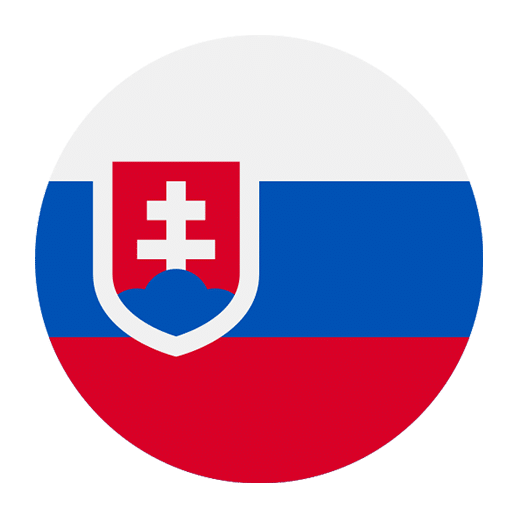Learning a new language can be an exciting yet challenging endeavor, and Slovak is no exception. As the official language of Slovakia, Slovak is spoken by approximately 5.5 million people in Slovakia and by Slovak communities around the world. This Slavic language is rich in history and culture, making it a rewarding choice for language enthusiasts. Whether you are planning to travel to Slovakia, connect with Slovak heritage, or simply challenge yourself, this beginner’s guide will provide you with the essential steps and resources to start your journey with learning Slovak.
Understanding the Basics
Before diving into the specifics of learning Slovak, it’s important to understand some of the fundamental aspects of the language. Slovak is a West Slavic language, closely related to Czech and Polish. It uses the Latin alphabet with some additional diacritical marks, making its written form relatively accessible to English speakers.
The Slovak Alphabet
The Slovak alphabet consists of 46 letters, including 26 basic Latin letters and additional letters with diacritical marks. Here are some of the unique letters you will encounter:
– Ľ, ľ
– Š, š
– Č, č
– Ť, ť
– Ž, ž
– Ô, ô
– Ď, ď
– Ň, ň
– Á, á
– É, é
– Í, í
– Ó, ó
– Ú, ú
– Ý, ý
These diacritical marks can change the pronunciation and meaning of words, so it’s crucial to familiarize yourself with them early on.
Pronunciation
Pronunciation in Slovak can be challenging but manageable with practice. Here are some tips for getting started:
Vowels: Slovak vowels are generally short and pronounced clearly. For example, the letter “a” is pronounced like the “a” in “father.”
Consonants: Some consonants in Slovak have no direct equivalent in English. For instance, the letter “č” is pronounced like the “ch” in “chocolate,” and “š” is pronounced like the “sh” in “shoe.”
Diacritics: Pay special attention to diacritical marks. The mark “ˇ” (háček) above a letter indicates a softer pronunciation. For example, “ď” is pronounced like the “dy” in “duty.”
Building Your Vocabulary
A strong vocabulary foundation is essential for any language learner. Here are some strategies to help you build your Slovak vocabulary:
Common Phrases and Greetings
Start with basic phrases and greetings that you can use in everyday conversations. Here are a few to get you started:
– Hello: Ahoj (informal) / Dobrý deň (formal)
– Goodbye: Dovidenia
– Please: Prosím
– Thank you: Ďakujem
– Yes: Áno
– No: Nie
– Excuse me: Prepáčte
Flashcards and Apps
Flashcards are a proven method for memorizing vocabulary. You can create your own flashcards or use language learning apps like Anki, Quizlet, or Memrise, which offer pre-made Slovak vocabulary decks.
Word Lists
Compile lists of commonly used words in different categories, such as food, family, numbers, and colors. Regularly review and practice these lists to reinforce your memory.
Understanding Grammar
Slovak grammar can be complex, but understanding its basic rules will help you construct sentences and communicate effectively.
Nouns and Cases
One of the most challenging aspects of Slovak grammar is the use of cases. Slovak has six grammatical cases: nominative, genitive, dative, accusative, locative, and instrumental. Each case changes the form of the noun based on its role in the sentence. For example:
– Nominative (subject): pes (dog)
– Genitive (possession): psa (of the dog)
– Dative (indirect object): psovi (to the dog)
– Accusative (direct object): psa (dog)
– Locative (location): psovi (on the dog)
– Instrumental (means): psom (with the dog)
Verb Conjugation
Slovak verbs are conjugated based on tense, person, and number. There are three main verb groups, each with its own conjugation pattern. Here’s an example of the verb “to be” (byť) in the present tense:
– Ja som (I am)
– Ty si (You are)
– On/ona/ono je (He/she/it is)
– My sme (We are)
– Vy ste (You are, plural/formal)
– Oni/ony sú (They are)
Sentence Structure
Slovak generally follows a Subject-Verb-Object (SVO) sentence structure, similar to English. However, word order can be flexible for emphasis. For example:
– “Ja vidím psa” (I see the dog) – standard SVO order
– “Psa vidím ja” (It is I who see the dog) – emphasis on the subject
Listening and Speaking Practice
Developing your listening and speaking skills is crucial for becoming fluent in Slovak. Here are some effective methods:
Listening to Native Speakers
Expose yourself to spoken Slovak as much as possible. Listen to Slovak radio stations, watch Slovak TV shows and movies, and follow Slovak YouTube channels. This will help you get accustomed to the natural rhythm and intonation of the language.
Language Exchange Partners
Finding a language exchange partner can provide you with valuable speaking practice. Websites like Tandem, HelloTalk, and ConversationExchange connect language learners with native speakers. Practicing with a native speaker will help you improve your pronunciation and conversational skills.
Language Courses and Tutors
Enrolling in a Slovak language course or hiring a tutor can provide structured learning and personalized guidance. Online platforms like iTalki, Preply, and Verbling offer access to experienced Slovak tutors.
Reading and Writing Practice
Reading and writing in Slovak will reinforce your vocabulary and grammar knowledge while improving your overall language proficiency.
Reading Materials
Start with simple texts such as children’s books, short stories, and news articles. Gradually progress to more complex materials like novels and academic texts. Websites like SME, Denník N, and Pravda offer news articles in Slovak.
Writing Exercises
Practice writing sentences, paragraphs, and essays in Slovak. Keep a journal where you write about your daily experiences, thoughts, and feelings. This will help you apply your vocabulary and grammar knowledge in context.
Language Learning Apps
Apps like Duolingo, Babbel, and Rosetta Stone offer interactive exercises for reading and writing practice. These apps provide instant feedback, helping you identify and correct mistakes.
Immersing Yourself in Slovak Culture
Language and culture are deeply intertwined, and immersing yourself in Slovak culture will enhance your language learning experience.
Music and Films
Listen to Slovak music and watch Slovak films to familiarize yourself with the language and culture. Some popular Slovak musicians include Richard Müller, Jana Kirschner, and IMT Smile. For films, check out works by directors like Martin Šulík and Juraj Jakubisko.
Travel to Slovakia
If possible, visit Slovakia to experience the language and culture firsthand. Interacting with locals, exploring historical sites, and participating in cultural events will provide you with valuable language practice and cultural insights.
Join Slovak Communities
Connect with Slovak communities and organizations in your area or online. Attend cultural events, join Slovak language groups, and participate in forums and social media groups dedicated to Slovak language and culture.
Staying Motivated and Consistent
Consistency is key to language learning success. Here are some tips to stay motivated and maintain a regular study routine:
Set Realistic Goals
Set achievable short-term and long-term goals for your language learning journey. For example, aim to learn a certain number of new words each week or complete a specific number of lessons in your language course.
Track Your Progress
Keep a language learning journal or use language learning apps to track your progress. Celebrate your achievements, no matter how small, to stay motivated.
Find a Study Buddy
Partner with a fellow language learner to study together and hold each other accountable. You can practice speaking, share resources, and motivate each other.
Take Breaks
Don’t overwhelm yourself with intense study sessions. Take regular breaks to relax and recharge. Consistent, shorter study sessions are often more effective than long, infrequent ones.
Conclusion
Learning Slovak is a rewarding journey that opens doors to new cultural experiences and connections. By understanding the basics, building your vocabulary, mastering grammar, and practicing your listening, speaking, reading, and writing skills, you will gradually become proficient in Slovak. Immerse yourself in the language and culture, stay motivated, and enjoy the process. With dedication and persistence, you will achieve your language learning goals and discover the beauty of the Slovak language.

